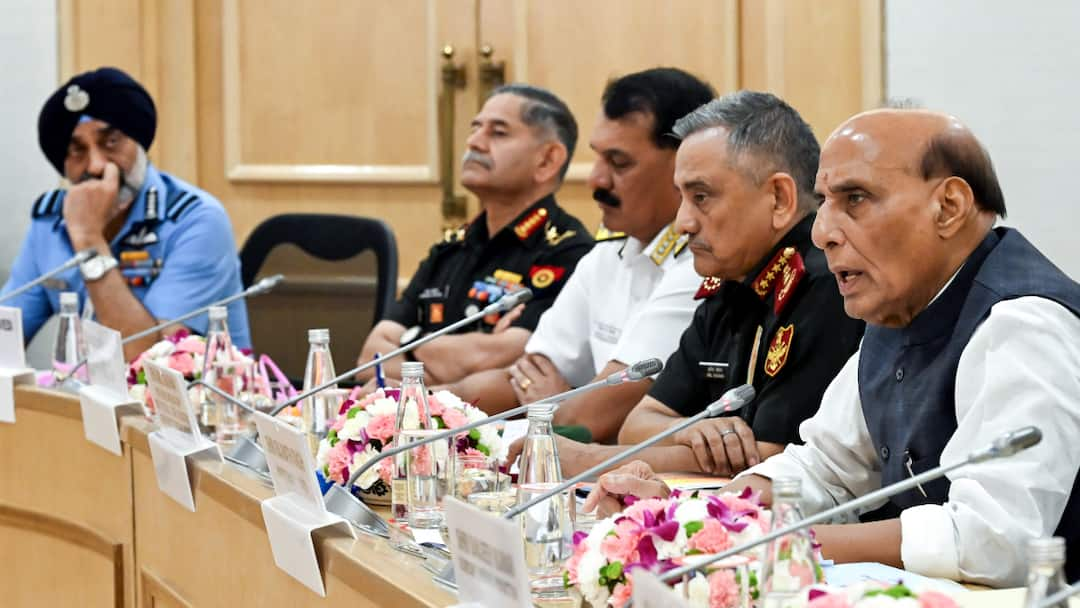As 2025 draws to a close, India looks back on a year of transformative changes in its defence sector, officially declared the “Year of Reforms.” Spearheaded by Defence Minister Rajnath Singh, the initiative aimed to modernise the armed forces, enhance national security, and strengthen India’s position as a global defence player.
A Year of Historic Reforms
2025 marked a decisive step in India’s long-term journey to modernise its military. Singh described the reforms as “unprecedented,” highlighting their potential to transform the armed forces into a technologically advanced, combat-ready force capable of tackling 21st-century threats.
High-level meetings throughout the year emphasised deeper integration and jointness among the army, navy, and air force. A key focus was the establishment of integrated theatre commands, a structural change aimed at improving coordination, efficiency, and operational readiness.
Major Defence Reforms in India – 2025
- Integrated Theatre Commands: Rollout of joint theatre commands to unify the Army, Navy, and Air Force for better coordination and operational efficiency.
- Streamlined Command Structure: Empowering the Chief of Defence Staff (CDS) and Secretary of the Department of Military Affairs to issue joint orders for all three services, creating a more cohesive command system.
- Faster Defence Procurement: Simplified acquisition procedures to reduce bureaucratic delays and enable agile, responsive decision-making.
- Focus on Emerging Technologies: Prioritising cyber, space, AI, machine learning, hypersonics, and robotics to prepare for modern, multi-domain warfare.
- Boosting Self-Reliance & Exports: Promoting public-private partnerships, indigenous R&D, and export initiatives, with ambitious targets for defence exports.
- Expanded Role for DRDO: Tasking the Defence Research and Development Organisation with developing advanced technologies and niche capabilities.
- Joint Operational Tactics: Developing new tactics, techniques, and procedures to enable integrated multi-domain operations and future warfare readiness.
Strengthening Jointness and Future Readiness
Over the year, the defence ministry developed tactics, techniques, and procedures tailored for modern warfare. Efforts to break down organisational silos, streamline acquisition processes, and optimise resource utilisation were also prioritised.
“The reforms of 2025 have laid a foundation for a more cohesive, agile, and technologically empowered military,” Singh noted, reflecting the government’s commitment to integration and synergy across all three services.
India’s Armed Forces Strengthen Readiness Through Joint Exercises in 2025
- Exercise Trishul & Brahmashira: Large-scale tri-service drills enhancing integrated theatre operations, joint command, and multi-domain warfare readiness.
- Exercise Maru Jwala: Desert operations testing coordination of land, air, and sea forces using drones, tanks, and helicopters.
- High-Altitude Exercises (Prachand Prahar): Focused on integrated operations along northern borders in mountainous terrain.
- Special Forces Drill (Desert Hunt): Para commandos, Marine Commandos, and Garud units tested rapid-response capabilities and joint operations.
- TROPEX-25: Navy-led theatre-level exercise involving Army and Air Force, emphasising anti-submarine warfare, amphibious landings, and cyber/electronic warfare.
- India–US Exercise Tiger Triumph: Tri-service Humanitarian Assistance and Disaster Relief (HADR) exercise with amphibious operations and joint command coordination.
- India–UK Exercise Ajeya Warrior-25: Counter-terrorism and semi-urban warfare operations enhancing interoperability with British troops.
- India–France Maritime Drill: Indian Navy and Air Force conducted joint maritime operations with French forces to boost surveillance and carrier strike coordination.
Boosting Defence Exports and Global Partnerships
2025 also saw India’s defence exports soar to new heights. From Rs 2,000 crore a decade ago, exports exceeded Rs 21,000 crore this year. Looking ahead, the government has set an ambitious target of Rs 50,000 crore by 2029.
The year witnessed increased emphasis on promoting indigenous research and development, forging partnerships between Indian industries and foreign equipment manufacturers, and positioning India as a credible global defence exporter.
Looking Back, Looking Ahead
As the year ends, 2025 will be remembered as a landmark period in India’s defence modernisation journey. By prioritising reforms, jointness, and global competitiveness, the country has set the stage for a stronger, more integrated military in the years to come.


